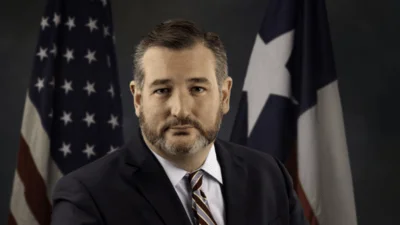The Congressional Record is a unique source of public documentation. It started in 1873, documenting nearly all the major and minor policies being discussed and debated.
“MAKAH WHALING EFFORT” mentioning the U.S. Dept. of Commerce was published in the Extensions of Remarks section on pages E2102-E2104 on Oct. 12, 1998.
The publication is reproduced in full below:
MAKAH WHALING EFFORT
______
HON. JACK METCALF
of washington
in the house of representatives
Monday, October 12, 1998
Mr. METCALF. Mr. Speaker, I rise today to briefly discuss the ongoing Makah whaling effort. As you may know, the Makah tribe have begun their efforts to hunt gray whales inside the Marine Sanctuary off the coast of Washington State. I continue to stand opposed to the slaughter of these whales, and have grave concerns about the effects that this hunt will have on the whale watching industry in my region and the precedent it sets world wide.
I ask unanimous consent to include this letter in the section for Extension of Remarks, written to NOAA by Mr. Will Anderson of the Progressive Animal Welfare Society (PAWS), an organization in Washington State. The letter brings forward some very interesting and provocative points against the whale hunt, and I would like to submit the text for consideration by the Members of the House and the public.
PAWS,
Lynnwood, WA, September 29, 1998.D. James Baker,Under Secretary for Oceans and Atmosphere, Washington, DC.
Dear Dr. Baker: As you know, the Makah have declared in the media that they will hunt gray whales anytime after October 1, 1998. This letter is a petition and notification on behalf of the members and supporters of the Progressive Animal Welfare Society (PAWS), a nonprofit organization based in Lynnwood, Washington. The subject of this letter concerns three documents created by agencies within the Department of Commerce.
However, before I describe our concerns regarding those documents, I need to first bring up the question of the Makah whaling season and their agreement, in the Makah Management Plan, to not kill resident whales.
I have read your letter to Mr. Ben Johnson, Chairman of the Makah Tribal Council, dated March 6, 1998. In that letter, with one reservation, you approved the Management Plan For Makah Treaty Gray Whale Hunting For The Years 1998-2002 (the Plan) and indicated that the Plan was understood by your agency to mean that only migrating gray whales would be targeted by Makah hunters. PAWS concurs with your finding that migrating gray whales are unlikely (we believe there is zero chance) to be in the area of Neah Bay until November. However, we are also aware of ample research data from both the United States and Canada that states the southward migration of gray whales will not arrive in Washington waters until December. Until that time, resident whales predominate. I recently confirmed this with Dr. Jim Darling, whose data the U.S. attorneys used in Metcalf versus Daley recently.
Unfortunately, the Makah seem intent on breaking the Agreement Between NOAA and the Makah Tribal Council (the Agreement). They have given clear signals to the media that they intend to kill whales on October 1, or shortly thereafter. Only ``resident'' whales will be there at that time.
So, we have two immediate problems: The first is that the Makah appear prepared to break the Agreement, perhaps within 48 hours, with Commerce's pre-knowledge. The second is the March 16 letter that asserts that the migration will be passing through Washington in November. Additionally, to my knowledge, as of today, the Makah have neither consulted with Commerce/NMFS that they believe a migration is under way, as is provided by the Whaling Plan and your March 16 letter, nor does NMFS have any idea of what that consultation would consist of or who would make that decision (personal communication with NMFS Seattle, this date).
Dr. Baker, I respectfully request that you immediately inform the Makah Whaling Commission and the Makah Tribal Council that it is a violation of the Agreement to kill the resident gray whales who transit between SE Washington harbors, to Neah Bay waters and Vancouver Island, Canada. More appropriately, the Makah hunt should not be done in the fall, even December, since the first of the migrating southbound whales are characteristically pregnant females.
Because the Makah are going back on their stated intent to only kill migratory gray whales and they appear to be violating the understanding as expressed in your March 6 letter, resident whales will be killed. (It should be noted that it will be impossible to tell the difference between migrants and residents during the migration because the two categories intermingle at those times. Only the odds of killing a resident change.)
PAWS urges you to rectify these matters by stating that, at the least, whaling will not be allowed to commence until December and that no whaling permits should be issued until that time. Furthermore, PAWS requests that you notify NMFS Seattle and instruct them to not declare a migration is in progress. It is scientifically untenable to do so.
The second overriding problem is that it appears Commerce has approved a Plan and entered into an Agreement which are both materially insufficient, at the least. There is a direct linkage beginning with 50CFR, Part 230 that describes what each document is to accomplish and what it is to contain. What follows is a review of three key documents that are the foundation of the Commerce Department's pro-Makah whaling program. The documents are. Federal Register/Vol. 61, No. 113/Tuesday, June 11, 1998/Rules and Regulations which is the publication of 50 CFR, Part 230, the revised domestic whaling regulations enabling the Inuit and Makah to hunt; the Agreement Between The National Oceanic And Atmospheric Administration And The Makah Tribal Council (the
``Agreement''); and the Management Plan For Mikah Treaty Gray Whale Hunting For The Years 1998-2002 (the Plan).
Federal Register (``FR''), 6/11/98: 50 CFR, Part 230
There are a number of ``promises'' made by the Department of Commerce/NMFS in both the preamble discussion and the final Rule. Both Toni Frohoff, representing the Humane Society of the United States (HSUS) and I, representing the Progressive Animal Welfare Society (PAWS) submitted comments on the revised regulations. Quotes from the Federal Register are in quotation marks and italicized.
(A) FR, page 29630, bottom half of second column,
``Nevertheless, NMFS will initiate research this summer on gray whales in the Makah area and in Puget Sound. This research is intended to help differentiate resident whales which may swim near Seattle and other local whale watching areas, from whales that are migrating past Neah Bay.'' Comment: Aside from the known fact that any whales killed in October will not be migrants, and the fact that we know John Calamokidis has an on-going research program of Washington's gray whales funded by NMFS, has the research been completed? Does this research cited in Commerce's response really give us the ability to differentiate between residents and migrants?
(B) FR, page 29630, bottom of second column to top of third column, ``If the IWC authorizes whaling by the Makah Tribe, NMFS will re-assess its obligations under the National Environmental Policy Act.'' Comment: Was there a formal re-assessment for this action?
(C) It should be noted that historically, IWC requirements for aboriginal whaling were stated in terms of cultural and subsistence need. Previous to the revision, that is how US regulations stated the requirements. In this 50 CFR, Part 230 revision, Commerce began stating that it was cultural and/or subsistence need. My comment in the FR, page 29629, third column, half-way down ````Comment`` the definition of whaling village should be changed to read `any U.S. village having a cultural and subsistence need for whaling' instead of having a cultural and/or subsistence need for whaling: Their
``Response: NMFS believes that the current language more accurately reflects the interpretation of the IWC of the requirements for aboriginal whaling.'' Comment: This is an arbitrary decision that has had an important effect on US conservation strategy and actions, domestically and internationally. The Commerce change of the word ``and'' to
``and/or'' was essential to the overall strategy to get the Makah approved as cultural whalers. The and/or decree appears to be a major administrative rule change that has the effect of law, yet there appears to be no formal administrative procedure(s) nor NEPA process.
(D) FR, page 29629, bottom of third column top of next page, 29630. Here is a discussion of Penalties. A commenter stated that penalties should be in CFR 50, Part 230. The Commerce response was that the ``Cooperative Agreement may delegate some enforcement functions to the Native American whaling organizations.'' They also state that, ultimately, the whalers are subject to the Whaling Convention Act (WCA) and the MMPA, and that Commerce has specific responsibilities under the law that would be enforced after failure of tribal efforts and consultation with tribes. However, in the Agreement and Plan, all penalties are tribal and no mention is made of any other provision. The Makah, operating under a treaty right, are exempt from the MMPA--or so it appears. The WCA may be the only enforcement mechanism, but this and its provisions are not discussed in the FR posting. We question the sufficiency of this arrangement and the change from delegating ``some'' to delegating totally.
(E) FR, page 29631, top of first column, is the state,
``This final Rule does not change the regulations that allow whaling only for subsistence and cultural use.'' Commerce uses ``and'' here. Do I not understand that ``and'' means both criteria apply as was the original practice? Or is this just a FR slip of the tongue? Please comment.
(F) FR, page 29631, ``If the IWC authorizes whaling by the Makah Tribe, NMFS will re-assess its obligations under the National Environmental Policy Act.'' This is the second time this was ``promised.'' See item ``B'' above. Was it ever acted upon? If not, we request NMFS do so before the hunt.
(G) FR, page 29631, two-thirds down the first column, ``. .
. whaling activities conducted under this rule will have no adverse effects on marine mammals beyond what is authorized by the IWC,'' This increases our concerns about the current stuck and lost criteria (see FR page 29628). Commerce states that a harpoon that falls out of a whale (see later discussion) does not count as a strike. This can does affect several whales beyond the 13 who are already above the quota of 20 which is ``what is authorized by the IWC.''
(H) FR, page 29631, bottom of third column, whaling village is defined as having a cultural and/or subsistence need for whaling. See items ``C'' and ``E'' above. Also take note of the definition assigned to ``strike'' as I will refer to it when discussing the Plan.
(I) FR, page 29631, Definitions. ``Aboriginal subsistence whaling means whaling authorized by paragraph 13 of the Schedule annexed to and constituting part of the Convention.''. Does this paragraph 13 include the enabling language the US Government is claiming as the quota given at Monaco, 1997? If so, it includes the phrase, ``. . . whose subsistence and cultural needs have been recognized.'' It has historically been the IWC that does the ``recognizing.''
(J) FR, page 29632, part 230.4, two-thirds down the first colum. Item ``(e) No person may receive money for participation in aboriginal subsistence whaling.'' I was told by one Makah person that Makah Whaling Commission Members were paid for each meeting and for each canoe/whaling practice. Is this true?
The Agreement Between NOAA and the Makah Tribal Council (the
``Agreement'')
(A) First page, Introduction. In this first paragraph there are references to the Treaty, the Whaling Convention Act
(WCA) and ``other Federal law.'' I find it hard to believe that this agreement makes no mention of 50 CFR, Part 230 as well as the ESA and MMPA which are in the Federal Register notice describing the requirement for the Agreement (FR, page 29629). This needs to be added to the Agreement.
(B) First page, Introduction, second paragraph, item (a) note that this stated the old language ``for subsistence and ceremonial purposes.'' I believe in its first appearance, this Agreement preceded the revised 50 CFR, Part 230 as published in the Federal Register (FR) which suddenly stated the and/or definition. Examples abound. Also note in item (b) the reference ``under a quota approved by the IWC.'' It brings up (as repetition) the amendment which read in part,
``whose subsistence and cultural need is recognized'' but this 1997 JWC language in not included in the Agreement which should be updated.
(C) Page 2, Request For Quota, 1.1(a) Again in pre-revised 50 CFR, Part 230, Commerce calls the Makah request subsistence. The referred-to statement was highly criticized. In part (b) of this section, the supplemental statement of need essentially said whale meat would replace junk food and become a meaningful part of their diet that would in turn improve their health. In part (c) I am unaware that NOAA/NMFS used any specific criteria for determining the adequacy of a needs statement. What are the criteria for objectively determining whether a needs statement meets a non-arbitrary threshold.
(D) Page 4, Item 2(d). ``An explanation of the circumstances associated with the striking of any whale not landed, and an estimate of whether the animal suffered a wound that might be fatal to the animal.'' This is an important and arguable aspect that consists of two parts. The first, as I will describe when evaluating the Makah Whaling Plan, is that the definition of strike in the Plan does not appear to agree with the definition in the Federal Register, revised 50 CFR, Part 230. The second has to do with defining and estimating what might be fatal. Though not directed primarily at whaling activities, NOAA Technical Memorandum NMFS-OPR-13, Differentiating Serious and Non-Serious Injury of Marine Mammals Taken Incidental to Commercial Fishing Operations: Report of the Serious Injury Workshop 1-2 April 1997, Silver Spring, Maryland, January, 1998 by Robyn P. Angliss and Douglas P. DeMaster sheds some important light as it does discuss whales injured by fisheries activities. Physiological responses appear to vary but can lead to death due to prolonged stress. There are several lengthy quotes that include physical injury to whales that did not appear to heal and afterward said whales were found dead on a beach. In short, NOAA/NMFS cannot tell with any accuracy (much less a Makah whaler), what constitutes a serious injury, especially with a .50 caliber projectile traveling into the water column some distance, out of human sight.
(E) Page 4, Management, item 3(b). The Makah Whaling Plan fails to declare an opening a closing date. Refer to this item when I bring it up in the Makah Whaling Plan.
(F) Page 5, item 3(e). Here it is stated that the hunting activities will take place outside of the Tatoosh-Bonilla Line. I have contacted a resource who is a cartographer who in turn called the Coast Guard. The Tatoosh-Bonilla line runs from Tatoosh Island near Neah Bay to Bonilla Point which is on Vancouver Island. Bonilla Point Latitude is 48 degrees, 35.7 minutes; Longitude is 124 degrees, 43 minutes. The Coast Guard's proposed regulatory zone extends eastward from this line where whaling is not supposed to take place. So whaling is not supposed to take place anywhere near Neah Bay, nor in most of the Strait of Juan de Fuca. Furthermore, ``whaling'' is defined in the Makah Whaling Management Plan as ``the scouting for, hunting, striking, killing or landing of a whale.'' Please note: we do not have, at this date, a copy of the Final Rule issued by the Coast Guard, so we can only assume what is known. I requested twice this morning a copy of the Final Rule and was told it would be published October 1, perhaps less than twenty-fours hours before the Makah hunt. If this is the case, it is intolerable to PAWS that the scheduling of the administrative Rule is set so close to a hunt. It deprives us of the information we and our representatives need to understand the Rule.
(G) Page 5, item 4(a) Enforcement. There is no mention regarding waste. In the Federal Register, in response to my comment on the revision of 50 CFR, Part 230, ``The term
`wasteful manner' should include the use and waste of whale products after landing.'' Keep in mind that landing means bringing any whale products on shore. NOAA/NMFS stated,
``NMFS agrees. The term has the same meaning as Sec. 216.3:
``Wasteful manner means any taking or method of taking which is likely to result in the killing of marine mammals beyond those needed for subsistence or the making of authentic native articles of handicrafts and clothing or which results in the waste of a substantial portion of the marine mammal .
. .'' Yet, the Agreement makes no mention of waste whatsoever. Please add a discussion and prohibition of waste to the Agreement.
The Makah Management Plan (the ``Plan'')
I believe the Makah Management Plan, already approved by D. James Baker (letter, March 16, 1998) with one exception (hunt in November, not October) is materially insufficient in not meeting the Federal Register published 50 CFR, Part 230 criteria and the Agreement.
(A) Page one, third paragraph. Note Commerce is now using
``ceremonial and subsistence'' language though the Department never proved a subsistence/nutritional need at the IWC, and arguably, nor in their needs statement domestically. What are the NOAA/NMFS criteria for approving/not approving cultural and subsistence needs? I have not seen any Rule or other promulgation to that effect.
(B) Page Two, Definitions, item ``G.'' Strike is defined in the Plan far differently than is defined in 50 CFR, Part 230. The language in the Plan requires the strike to ``result or is likely to result in death'' in order to be counted as a strike. The Plan additionally requires the harpoon to remain embedded in the whale to count as a strike! Five harpoons could conceivably fall out of a single whale and not be counted as a strike. Commerce appears to have no basis for making this determination. The 50 CFR, Part 230 reads,
``Strike means hitting a whale with a harpoon, lance or explosive device.'' That's it. See my citation on wounded whales incidental to fishing operations for a wealth of quotes that indicate the Plan's definition is simply insupportable. It does not follow the precautionary principal. Please make the Plan consistent with 50 CFR, Part 230. Every weapon striking the skin, perhaps breaking the skin, of a whale should count as a strike.
(C) Page 2, Definitions, item ``A.'' Calf. I'm going back to this because I've always been bothered with the response of NOAA to our comments regarding the definition of calf. Commerce took the position of determining whether or not a whale was a calf by seeing if there was milk in his stomach after--the infraction when the whale calf is dead. It is interesting that in the old CFR regulations, a Bowhead whale was called a calf if she was under 25 feet in length. We protest the new definition in that it weakens and fails efforts to protect calves.
(D) Page four, item ``D.'' The Council shall provide at least 24 hours advance notice to the NMFS prior to approving a whaling permit. That advance notice is not required if an NMFS agent is on the Makah Reservation. The time frame does not allow enough administrative oversight (one field biologist given information and sole authority) and ensures the public will be excluded from notice.
(E) Page 4, item ``F.'' ``The Commission (here referring to the Makah Whaling Commissions, in other documents The International Whaling Commission) may issue a whaling permit only after determining there is an unmet subsistence or cultural need for whale products in the tribal community.'' Here is the same pattern, mixing ``and'' with ``and/or'' and now ``or.'' Which is it?
(F) Page 5, item ``V.'' Training/Qualifications. This paragraph says that Makah whaling team members will be trained and certified for their roles under certification guidelines established by the Commission. I'd like to see those guidelines. We should be able to because this certification is required by 50 CFR
(Part 230.4(d)) ``No whaling captain shall engage in whaling without an adequate crew or without adequate supplies and equipment.'' There is a clear link between the CFR and this Plan. Page 3, top, of the Agreement requires the Plan. The Agreement is required by 50 CFR in Part 230.2 Definitions, Cooperative Agreement. Are we not allowed access to them, as they are required by CFR?
(G) Item VII, Area Restrictions, ``A.'' Whaling is only permitted westward on the open ocean outside the Tatoosh-Bonilla Line. As described in my item ``F'' under the critique of the Agreement, this line is far different from the Coast Guard's regulatory/exclusion zone (note, since the Final Rule is not out at this date, I and the public are clueless as to the content and application of the Rule).
(H) Enforcements and Penalties Sections on pages 8 and 9. As discussed earlier, in the 50 CFR negotiations, it was published in the FR that some enforcement/penalties responsibilities may be transferred to tribal authorities. See my comments under the 50 CFR critique, my item (D).
(I) There are no opening and closing dates for each year's hunts in the whaling in the Plan. This is succinctly required in the Agreement on page 4, item 3(b). They would have to do this for the Spring hunt as well.
Secretary Baker, since this matter is of urgent importance, we respectfully request a timely response to our concerns, before the Makah are allowed to conduct their hunt.
Sincerely,
Will Anderson,
Wildlife Advocate.








